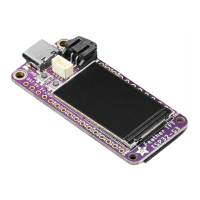// turn on the I2C power by setting pin to opposite of 'rest state'
pinMode(PIN_I2C_POWER, INPUT);
delay(1);
bool polarity = digitalRead(PIN_I2C_POWER);
pinMode(PIN_I2C_POWER, OUTPUT);
digitalWrite(PIN_I2C_POWER, !polarity);
pinMode(NEOPIXEL_POWER, OUTPUT);
digitalWrite(NEOPIXEL_POWER, HIGH);
#endif
}
void disableInternalPower() {
#if defined(NEOPIXEL_POWER)
pinMode(NEOPIXEL_POWER, OUTPUT);
digitalWrite(NEOPIXEL_POWER, LOW);
#endif
#if defined(NEOPIXEL_I2C_POWER)
pinMode(NEOPIXEL_I2C_POWER, OUTPUT);
digitalWrite(NEOPIXEL_I2C_POWER, LOW);
#endif
#if defined(ARDUINO_ADAFRUIT_FEATHER_ESP32S2)
// turn on the I2C power by setting pin to rest state (off)
pinMode(PIN_I2C_POWER, INPUT);
pinMode(NEOPIXEL_POWER, OUTPUT);
digitalWrite(NEOPIXEL_POWER, LOW);
#endif
}
The best way to really test power draw is with a specialty power meter such as the
Nordic PPK 2
Nordic nRF-PPK2 - Power Profiler Kit II
The Power Profiler Kit IIis a standalone
unit, which can measure and optionally
supply currents all the way from sub-uA
and as high as 1A on all Nordic DKs, in...
https://www.adafruit.com/product/5048
When running the above code and monitoring with a PPK, you'll get a graph like this:
©Adafruit Industries Page 26 of 263

